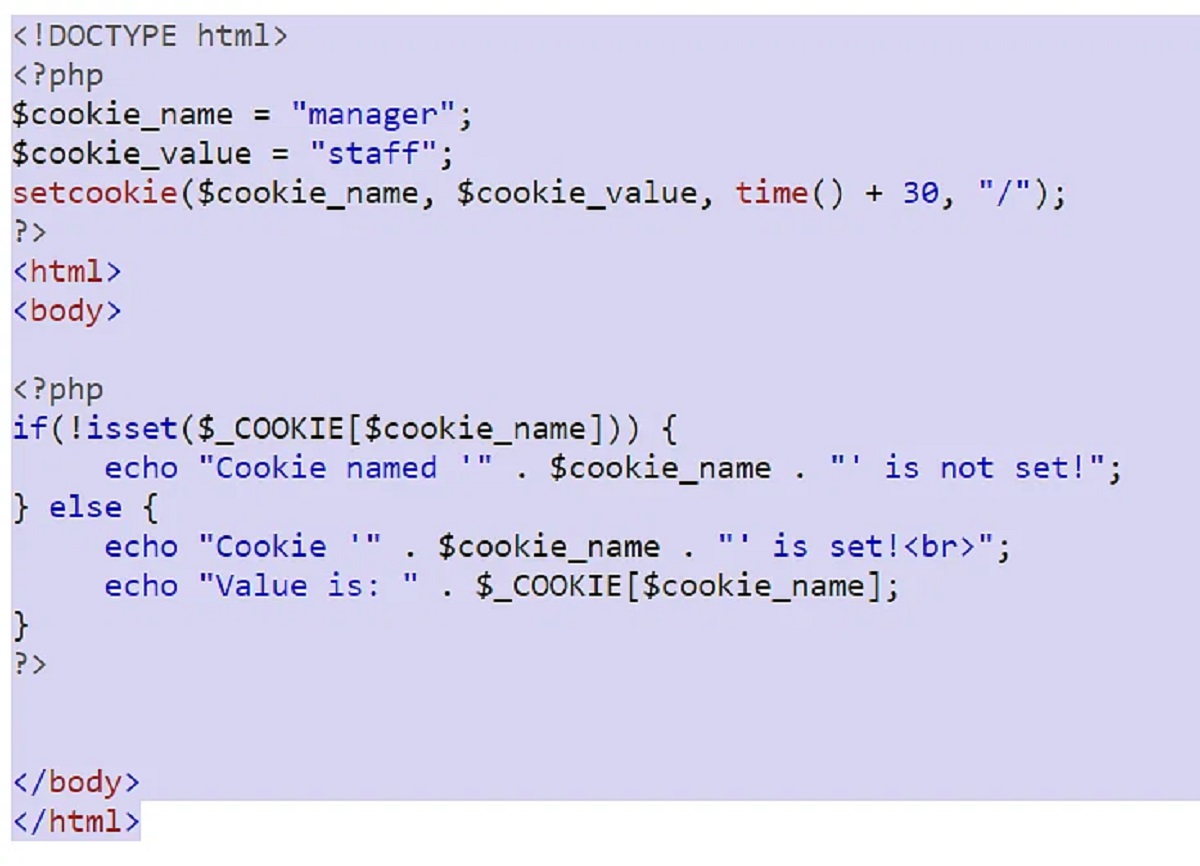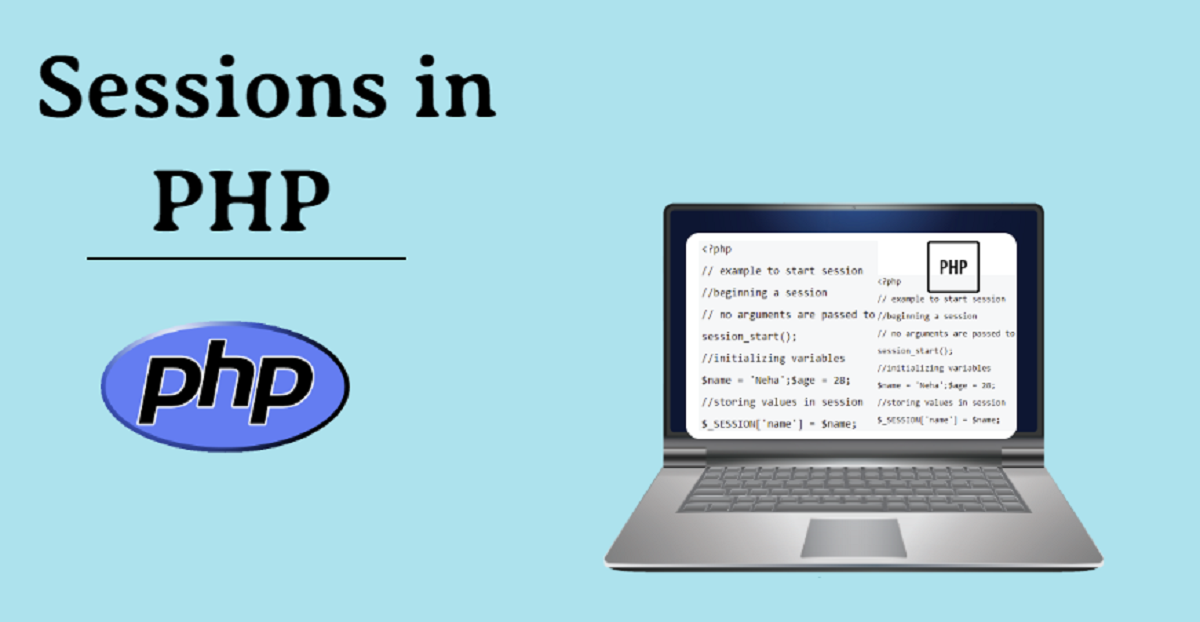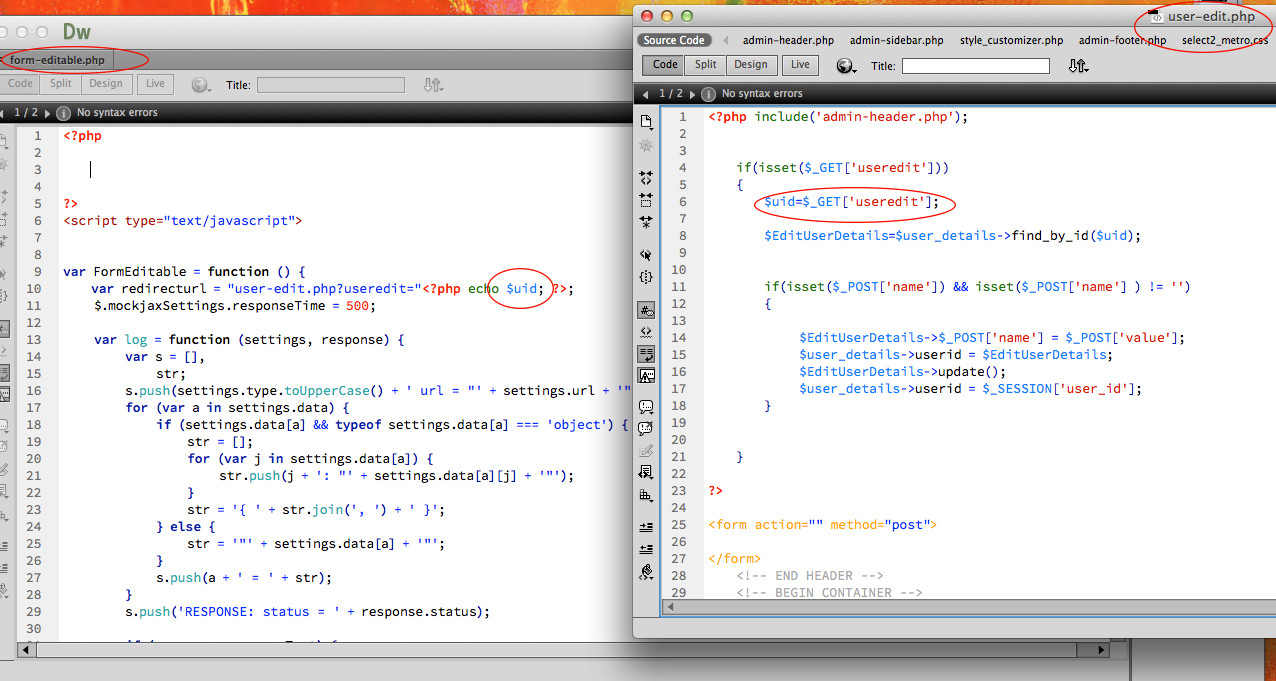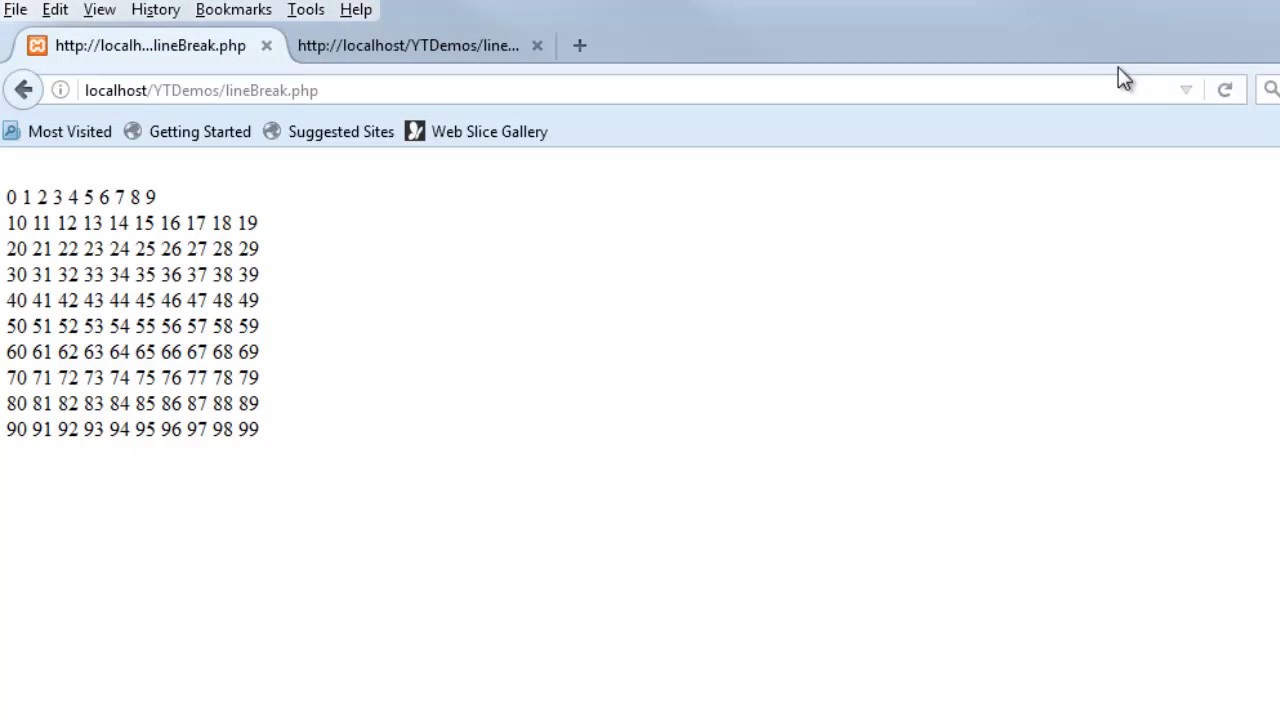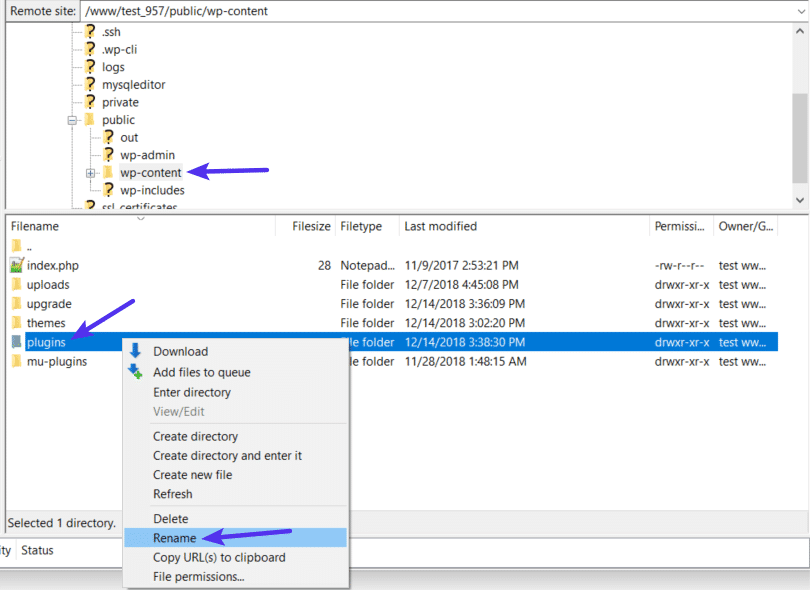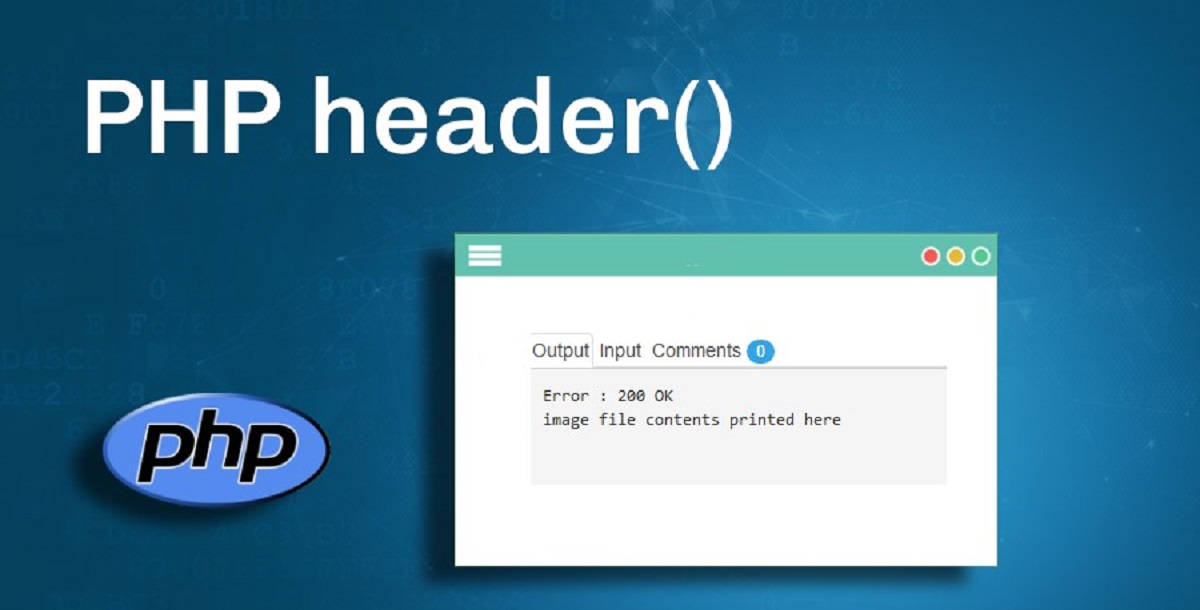Introduction
Welcome to this guide on how to create a cookie in PHP! If you’re a web developer or a beginner in PHP, cookies are an essential part of web development that you need to understand. Cookies allow you to store and retrieve data on the client’s browser, which can be extremely useful for creating personalized user experiences, tracking user preferences, or implementing session management.
In this article, we’ll walk you through the process of creating and manipulating cookies using PHP. We’ll cover everything from setting the cookie name and value to managing the expiry time, path, and domain. So, whether you’re looking to store user preferences, remember login credentials, or track visitor statistics, this guide will provide you with the necessary knowledge to accomplish these tasks efficiently.
Before we dive into the technical aspects, let’s briefly discuss what cookies are and why they are important in web development. A cookie is a small text file stored on the user’s browser, which allows websites to remember specific information about the user or their browsing session. By utilizing cookies, you can personalize the user experience, offer tailored content, and track user behavior across different pages and sessions.
Cookies are widely used in various scenarios, including remembering user preferences, implementing shopping carts, tracking user sessions, and providing personalized advertisements. With PHP, you can easily create, access, and manipulate cookies programmatically using built-in functions and methods.
Throughout this guide, we will explore the step-by-step process of creating cookies, setting their properties, retrieving the stored values, updating the cookie data, and even deleting them when necessary. By the end of this article, you’ll have a solid understanding of how to effectively utilize cookies in your PHP web applications.
What is a Cookie?
A cookie, in the context of web development, is a small piece of data stored on the user’s browser. It allows websites to remember information about the user or their browsing session. When a user visits a website, the web server can send a cookie to the user’s browser, which will then be stored on their computer or mobile device. The next time the user visits the same website, the browser will send the cookie back to the server, providing the website with access to the stored data.
Cookies are primarily used to personalize the user experience and make it more efficient. For example, a website can use cookies to remember a user’s preferences, such as language settings, theme preferences, or layout choices. This way, every time the user visits the website, it will be displayed according to their personal preferences without the need to set them again.
Cookies can also be used for session management. When a user logs into a website, a session cookie is created and stored on the browser. This cookie contains a unique identifier that allows the server to recognize the user during their visit. With the help of cookies, the website can keep the user logged in across multiple pages or even multiple sessions without the need to enter login credentials repeatedly.
Additionally, cookies are commonly used for tracking user behavior and collecting analytics data. By storing a unique identifier or a tracking code in a cookie, websites can record information about how users navigate through their site, which pages they visit, how long they stay, and other relevant data. This information can be valuable for analyzing user trends, improving website performance, and delivering targeted advertisements.
It is important to note that cookies are not inherently malicious and do not contain viruses or malware. However, they can be misused if not properly handled. Privacy concerns arise when cookies track user information without their consent or collect sensitive data. Therefore, respecting user privacy and providing transparent information about cookie usage is crucial for maintaining trust and compliance with privacy regulations.
Now that we have a clear understanding of what cookies are and their significance in web development, let’s move on to the practical aspect of creating cookies in PHP. We will explore the necessary steps to set up a cookie, define its properties, and utilize the stored data for various purposes.
Creating a Cookie in PHP
To create a cookie in PHP, you can use the setcookie() function. This function allows you to set the necessary parameters for the cookie, such as the name, value, expiry time, path, and domain.
The basic syntax for creating a cookie is as follows:
php
setcookie(name, value, expiry, path, domain);
Let’s break down each parameter:
- Name: This is the name of the cookie and is used to identify it. It should be unique and meaningful.
- Value: This is the information you want to store in the cookie. It can be a string, number, or any other data type.
- Expiry: This parameter defines the expiration time of the cookie. It determines how long the cookie will be stored on the user’s browser before it automatically expires. The expiry can be set as a specific date and time or as the number of seconds from the current time.
- Path: This parameter specifies the directory on the server where the cookie is valid. By default, it is set to “/” which means the cookie is valid for the entire website.
- Domain: This parameter specifies the domain or subdomain where the cookie is valid. By default, it is set to the current domain.
Let’s look at an example:
php
setcookie(“username”, “John Doe”, time() + (86400 * 30), “/”);
In this example, we are creating a cookie named “username” with the value of “John Doe”. The expiry time is set to 30 days from the current time, and the cookie is valid for the entire website (“/”).
It’s important to note that cookies should be set before any HTML output to the browser. Otherwise, the cookie may not be set correctly. Typically, cookies are set at the beginning of a PHP script, before any HTML tags.
Now that we know how to create a cookie in PHP, we can move on to exploring the different properties that can be set for a cookie, such as the expiry time, path, and domain.
Setting the Cookie Name and Value
When creating a cookie in PHP, it’s important to choose meaningful names for your cookies. The cookie name is used to identify the data stored in the cookie, so it should be unique and descriptive. It’s best to use lowercase letters, numbers, and underscores in the name, and avoid using spaces or special characters.
The value of the cookie is the data that you want to store. It can be a string, number, or any other data type. You can set the value of a cookie by passing it as the second parameter to the setcookie() function.
Let’s look at an example:
php
setcookie(“username”, “John Doe”);
In this example, we are setting the value of the cookie named “username” to “John Doe”. When this cookie is sent to the browser, it will store this value.
You can also set the value of a cookie to an array or an object by serializing it using PHP’s serialize() function. This allows you to store more complex data structures in a cookie. When retrieving the cookie value, you can unserialize it using PHP’s unserialize() function to get back the original array or object.
It’s important to note that the value of a cookie is stored as plain text on the client’s browser. Therefore, it’s generally recommended to avoid storing sensitive information, such as passwords or credit card numbers, in cookies. If you need to store sensitive data, it’s better to store a unique identifier in the cookie and store the actual data securely on the server-side.
Now that we know how to set the cookie name and value in PHP, let’s move on to exploring other properties that can be set for a cookie, such as the expiry time, path, and domain.
Setting the Expiry Time for a Cookie
When creating a cookie in PHP, you can specify the expiry time for the cookie. The expiry time determines how long the cookie will be stored on the user’s browser before it automatically expires and is deleted. Setting an appropriate expiry time is crucial for managing the lifespan of your cookies.
There are two ways to set the expiry time for a cookie in PHP: by specifying a specific date and time or by setting the expiry time in seconds from the current time.
To specify a specific date and time for the cookie to expire, you can use the PHP strtotime() function to convert a date and time string into a Unix timestamp. For example:
php
$expiry_date = strtotime(“2022-12-31”);
setcookie(“example_cookie”, “example_value”, $expiry_date);
In this example, the cookie named “example_cookie” will expire on December 31, 2022, at midnight. Once the expiry date is reached, the cookie will be deleted from the user’s browser.
Alternatively, you can set the expiry time in seconds from the current time. The time() function returns the current Unix timestamp, which represents the number of seconds since January 1, 1970. Adding the desired number of seconds to the current time will give you the expiry time for the cookie. For example:
php
$expiry_time = time() + (86400 * 7); // Expires in 7 days
setcookie(“example_cookie”, “example_value”, $expiry_time);
In this example, the cookie named “example_cookie” will expire in 7 days from the current time. The value 86400 represents the number of seconds in a day.
It’s important to note that if you don’t set an expiry time for the cookie, it will be considered a session cookie. A session cookie is temporary and will only exist until the user closes their browser. Session cookies are useful for managing user sessions and providing temporary data storage.
Setting an appropriate expiry time for your cookies is essential for managing user preferences, session management, and data storage. It allows you to control how long the cookie stays on the user’s browser and provides a level of control over data retention.
Next, let’s explore how to set the path and domain for a cookie in PHP.
Setting the Path and Domain for a Cookie
When creating a cookie in PHP, you have the option to specify the path and domain for which the cookie is valid. These properties determine the scope or range of the cookie’s visibility and accessibility.
The path parameter allows you to set the directory on the server for which the cookie is valid. By default, the path is set to “/” which means the cookie is valid for the entire website. However, you can restrict the cookie’s visibility to a specific directory within the website by setting the path accordingly.
For example, consider the following code:
php
setcookie(“example_cookie”, “example_value”, time() + 3600, “/products”);
In this example, the cookie named “example_cookie” will only be valid for pages within the “/products” directory. If a user visits a page outside this directory, the cookie will not be sent along with the request.
The domain parameter allows you to set the domain or subdomain for which the cookie is valid. By default, the domain is set to the current domain. However, if your website uses subdomains or if you want the cookie to be accessible across multiple domains, you can set the domain accordingly.
Consider the following code:
php
setcookie(“example_cookie”, “example_value”, time() + 3600, “/”, “.example.com”);
In this example, the cookie named “example_cookie” will be valid for all subdomains of “example.com”. This allows the cookie to be accessible across different subdomains, such as “subdomain1.example.com” and “subdomain2.example.com”. By using a leading dot in the domain parameter (“.example.com”), the cookie is also accessible from other domains that share the same top-level domain.
Setting the path and domain for a cookie provides flexibility in determining where and when the cookie is accessible. It allows you to control the scope and visibility of the cookie based on your specific needs. By setting these properties appropriately, you can ensure that the cookie is sent only to the desired pages and domains.
Next, let’s explore how to retrieve the values stored in a cookie using PHP.
Retrieving Cookie Values
Once a cookie is created and stored on the user’s browser, you can retrieve its value using PHP. Retrieving a cookie value is typically done using the $_COOKIE superglobal array.
The $_COOKIE array contains key-value pairs, where the key is the cookie name and the value is the stored data. To access the value of a specific cookie, you can use the cookie name as the array key.
Let’s look at an example:
php
$cookie_value = $_COOKIE[“example_cookie”];
In this example, we are retrieving the value of a cookie named “example_cookie” and storing it in the variable $cookie_value.
It’s important to note that the $_COOKIE array only contains the cookie values that were set during the current user’s session. The values of cookies set by other users or previous sessions are not accessible.
To ensure the security and integrity of the retrieved cookie data, it’s essential to sanitize and validate the values before using them in your application. The cookie data should not be trusted blindly, as it can be manipulated by the user.
If a cookie does not exist or has expired, accessing its value through the $_COOKIE array will result in an error. To avoid this, you can use the isset() function to check if a specific cookie exists before accessing its value. For example:
php
if (isset($_COOKIE[“example_cookie”])) {
$cookie_value = $_COOKIE[“example_cookie”];
// Proceed with using the cookie value
} else {
// Cookie does not exist, handle accordingly
}
Using the isset() function helps prevent errors and allows you to handle situations where a cookie may not be present.
Now that we know how to retrieve the values stored in a cookie, let’s explore how to update the values of a cookie in PHP.
Updating Cookie Values
In PHP, updating the values of a cookie is similar to creating a new cookie. You can simply use the setcookie() function again with the desired updated value.
To update a cookie value, you need to specify the same cookie name as before. By setting a new value for the same cookie name, the old value will be overwritten with the new one.
Let’s look at an example:
php
setcookie(“example_cookie”, “new_value”);
In this example, we are updating the value of the cookie named “example_cookie” to “new_value”. The previous value of the cookie will be replaced with the new value.
It is worth noting that when updating a cookie, you do not need to specify the expiry time, path, or domain again. The updated values will retain the previous properties unless explicitly changed.
It’s important to remember that the updated value of a cookie will only be available to the client’s browser and will not take effect until the next request to the server. This means that the updated value will not be accessible within the same page or script where the cookie was updated.
When updating a cookie, you may want to consider the potential implications for user experience and security. Carefully assess whether updating a cookie value is necessary and ensure that any changes made do not compromise user privacy or data integrity.
Now that we know how to update the values of a cookie, let’s explore how to delete a cookie in PHP.
Deleting a Cookie
In PHP, deleting a cookie is done by setting the cookie’s expiration time to a value in the past. When the browser receives the response with the expired cookie, it removes the cookie from the user’s browser.
To delete a cookie, you can use the setcookie() function with the expiry time set to a past date and time. By setting the expiry time in the past, the browser will consider the cookie expired and remove it from the user’s browser.
Let’s look at an example:
php
setcookie(“example_cookie”, “”, time() – 3600);
In this example, we are setting the expiry time of the cookie named “example_cookie” to an hour ago (3600 seconds in the past). This effectively deletes the cookie from the user’s browser.
It’s important to note that when deleting a cookie, you need to specify the same path and domain that were used when the cookie was created or updated. This ensures that the browser properly identifies the cookie to be deleted.
Deleting a cookie is useful when you no longer need to store or retrieve specific data from the user’s browser or when you want to invalidate a session cookie. By removing the cookie, you can ensure that no further operations are performed using the outdated data stored in the cookie.
It’s important to mention that deleting a cookie only affects the browser-side storage. The data associated with the cookie may still be saved on the server-side, so it’s important to consider any data retention policies or security concerns when handling user data.
Now that we know how to delete a cookie, let’s recap what we’ve learned in this guide and how cookies can be utilized in PHP web applications.







